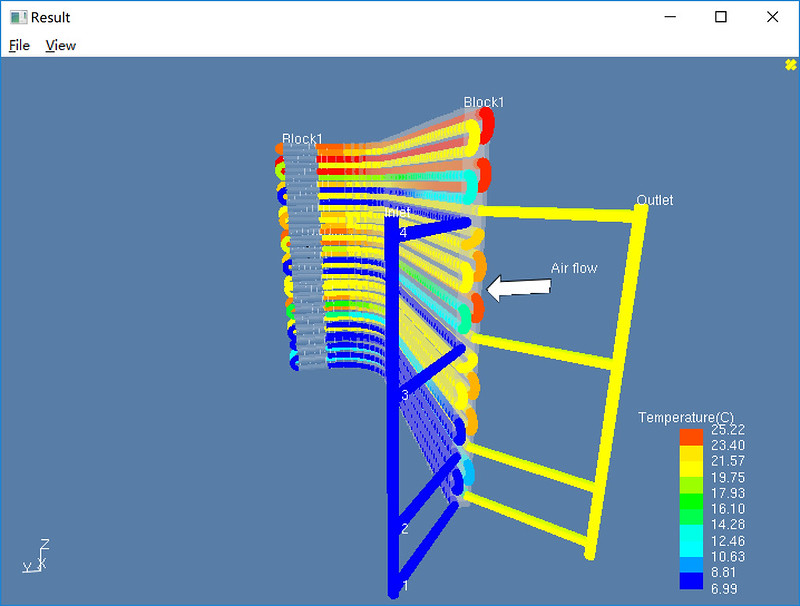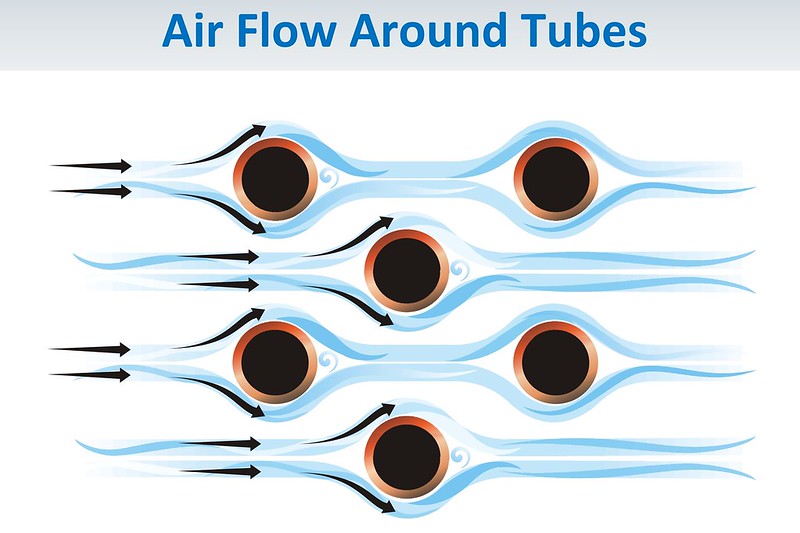
The use of simulations has become commonplace in every field of engineering design, including heat exchangers. The mathematics has been available for decades, and now computing power has caught up with the mathematics. Powerful simulation software is widely available to product design engineers. Simulation tools for design engineers have also become easy to use, with menu driven interfaces and 3D visualizations of results.
One does not need to be an expert in the mathematics of complex systems to run a simulation of a heat exchanger design. Refrigerant formulations, heat-exchanger technology and compressor designs are rapidly changing even as the times-to-market are accelerating. There has never been so great a need to accurately predict performance without building prototypes.
Heat Exchanger Simulation Software
There are several simulation software packages on the market for product design engineers. One of the most powerful is CoilDesigner® from Optimized Thermal Systems Inc. (Beltsville, Maryland) (OTS).
CoilDesigner from OTS

OTS actively works with various HVACR designers around the world to optimize heat exchanger geometry.
The Copper Development Association (CDA) has worked with OTS to develop heat transfer correlations for coils made with copper tubes, including smaller diameter copper tubes. These correlations include airside (fin) and refrigerant side (tube) correlations, which have been implemented in the CoilDesigner® software.
In partnership with the CDA, OTS delivered several webinars that explain the use of these new correlations in the CoilDesigner software. The webinar “The Advantages of Small Diameter Copper Tube-Fin Heat Exchangers” is the first in a series of webinars promoted by OTS with the Copper Alliance.
There are several academic papers from OTS on the development of these correlations.
- CFD-Based Correlation Development for Air Side Performance of Wavy Fin Tube Heat Exchangers using Small Diameter Tubes
- CFD-Based Airside Heat Transfer and Pressure Drop Correlation Development for Small Diameter (3 mm to 5 mm) Louver Fin Heat Exchangers
- CFD Based Comparison of Slit Fin and Louver Fin Performance for Small Diameter (3mm to 5 mm) Heat Exchangers
In recent years, CDA has also supported research from various OEMs who have simulated the performance of coils using smaller diameter copper tubes. The results were presented at the International Congress of Refrigeration.
HPDM from ORNL
HPDM has a long history, originating as a model developed at MIT in 1976. An ORNL report is interesting for comparisons between the early versions and the current programs. Most simulations programs currently in use are based on the HPDM software developed at ORNL. Read more.
HPDM is available as an online program. The latest HPDM (Mark VIII) program is in the public domain and available as a downloadable desktop version. The software allows for separately simulating heat exchanger performance and the complete system. HPDM can simulate tube-fin heat exchangers (TFHXs) with diameters as small as five millimeters and includes units in English (inches). The ORNL Heat Pump Design Model remains a popular tool and has been used and adopted by several major US manufacturers as their in-house product design tool.
Simulation Software from ICA
Simulation software also was developed with the support of a consortium of manufacturers, universities, and associations, including the International Copper Association (ICA). An early version of the software was described in 2004 by Liu et al. in a paper titled “Simulation-Based Design Methods for Room Air Conditioners with Smaller Diameter Copper Tubes” presented at the International Congress of Refrigeration in Prague (IIR ICR in 2011). This paper describes the inner workings of the software, including the physical equations that it solves.
Unilab and Others

Unilab is an Italian-owned independent software house, which has provided its clients with high quality Heat Transfer Software for more than 35 years. It offers software modules for specific kinds of heat exchangers and heat exchanger applications.
There are countless other simulation software programs of various degrees of sophistication. Some are internally developed programs from OEMs or coil makers. In such cases, the simulations may be restricted to coil designs and fin patterns offered by the coil maker. Often the heat transfer engineers within the OEM companies will compare their results with the results from HPDM, HXSim or CoilDesigner simulations.
The next step after simulations is optimization. When the basic criteria have been established for a coil design, it is possible to run simulations on thousands of coil designs.
A Multiple Objective Genetic Algorithm (MOGA) is used to systematically explore the design space for coil designs. The results of several MOGA studies were conducted by OTS for CDA and OEM partners. The results were presented in a paper presented at the International Congress of Refrigeration. Read more (paywall).
Additional Resources:
